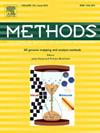3DCellComposer − A versatile pipeline utilizing 2D cell segmentation methods for 3D cell segmentation
IF 4.3
3区 生物学
Q1 BIOCHEMICAL RESEARCH METHODS
引用次数: 0
Abstract
Cell segmentation is crucial in bioimage informatics, as its accuracy directly impacts conclusions drawn from cellular analyses. While many approaches to 2D cell segmentation have been described, 3D cell segmentation has received much less attention. 3D segmentation faces significant challenges, including limited training data availability due to the difficulty of the task for human annotators, and inherent three-dimensional complexity. As a result, existing 3D cell segmentation methods often lack broad applicability across different imaging modalities. To address this, we developed a generalizable approach for using 2D cell segmentation methods to produce accurate 3D cell segmentations. We implemented this approach in 3DCellComposer, a versatile, open-source package that allows users to choose any existing 2D segmentation model appropriate for their tissue or cell type(s) without requiring any additional training. Importantly, we have enhanced our open source CellSegmentationEvaluator quality evaluation tool to support 3D images. It provides metrics that allow selection of the best approach for a given imaging source and modality, without the need for human annotations to assess performance. Using these metrics, we demonstrated that our approach produced high-quality 3D segmentations of multichannel tissue images. 3DCellComposer, when paired with well-trained 2D segmentation models, provides an important alternative to acquiring human-annotated 3D images for new sample types or imaging modalities and then training 3D segmentation models using them. It is expected to be of significant value for large scale projects such as the Human BioMolecular Atlas Program.
3DCellComposer -利用2D细胞分割方法进行3D细胞分割的多功能管道。
细胞分割在生物图像信息学中是至关重要的,因为它的准确性直接影响细胞分析得出的结论。虽然许多二维细胞分割的方法已经被描述,但三维细胞分割却很少受到关注。3D分割面临着巨大的挑战,包括由于人类注释者的任务困难而导致的训练数据可用性有限,以及固有的三维复杂性。因此,现有的三维细胞分割方法往往缺乏对不同成像模式的广泛适用性。为了解决这个问题,我们开发了一种可推广的方法,用于使用2D细胞分割方法来产生准确的3D细胞分割。我们在3DCellComposer中实现了这种方法,这是一个通用的开源软件包,允许用户选择适合其组织或细胞类型的任何现有2D分割模型,而无需任何额外的培训。重要的是,我们已经增强了我们的开源CellSegmentationEvaluator质量评估工具,以支持3D图像。它提供的指标允许为给定的成像源和模式选择最佳方法,而不需要人工注释来评估性能。使用这些指标,我们证明了我们的方法产生了高质量的多通道组织图像的3D分割。3DCellComposer与训练有素的2D分割模型配对时,为获取新的样本类型或成像模式的人工注释3D图像提供了重要的替代方案,然后使用它们训练3D分割模型。预计对人类生物分子图谱计划等大型项目具有重要价值。
本文章由计算机程序翻译,如有差异,请以英文原文为准。
求助全文
约1分钟内获得全文
求助全文
来源期刊

Methods
生物-生化研究方法
CiteScore
9.80
自引率
2.10%
发文量
222
审稿时长
11.3 weeks
期刊介绍:
Methods focuses on rapidly developing techniques in the experimental biological and medical sciences.
Each topical issue, organized by a guest editor who is an expert in the area covered, consists solely of invited quality articles by specialist authors, many of them reviews. Issues are devoted to specific technical approaches with emphasis on clear detailed descriptions of protocols that allow them to be reproduced easily. The background information provided enables researchers to understand the principles underlying the methods; other helpful sections include comparisons of alternative methods giving the advantages and disadvantages of particular methods, guidance on avoiding potential pitfalls, and suggestions for troubleshooting.
 求助内容:
求助内容: 应助结果提醒方式:
应助结果提醒方式:


